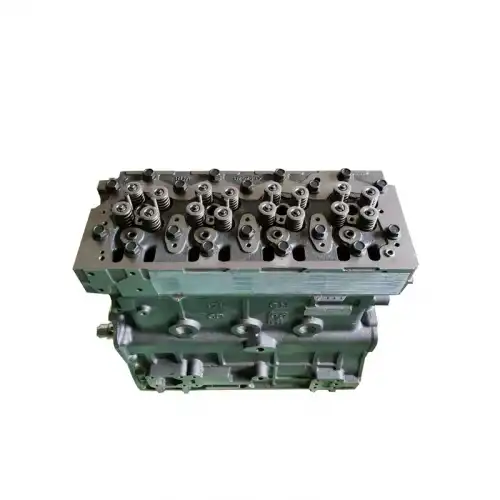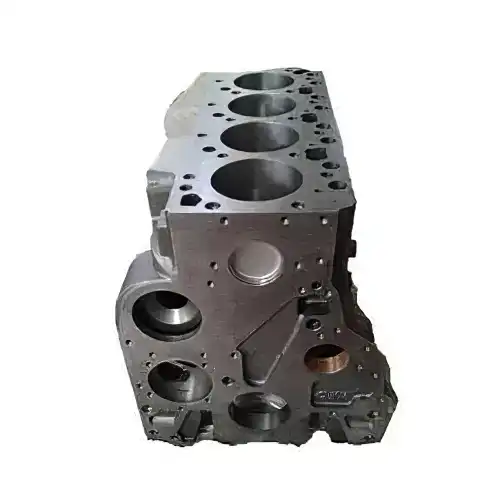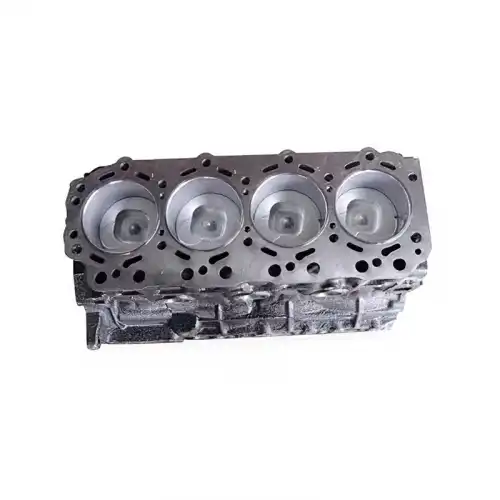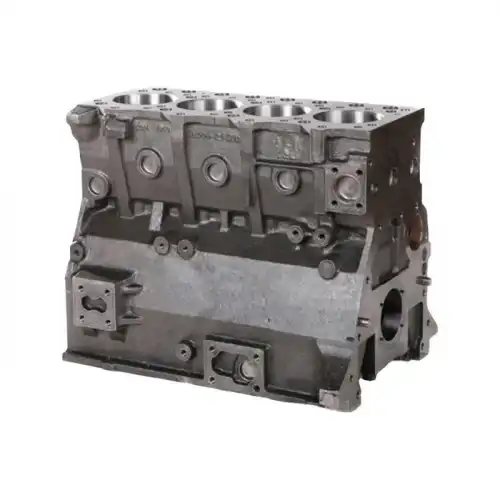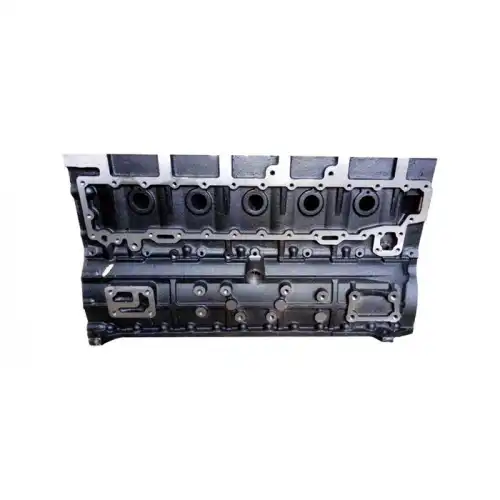What Is A Cylinder Block And How Does It Work?
The engine cylinder block, which houses fundamental parts such as cylinders, pistons, connecting rods, and crankshafts, is the fundamental building block of an internal combustion engine. It helps support a number of auxiliary systems in addition to giving the engine comprehensive structural support. The features and operation of this crucial mechanical engineering component are explained in this article by MyMROmarts.
What Is A Cylinder Block?
The cylinder block also called the engine block, is used to maintain the stability and lubrication of the engine when subjected to various temperatures and loads. At the same time, they send oil through multiple oil passages to all parts of the engine, lubricating all vital parts.
The engine block structure contains the cylinders and other engine parts of an internal combustion engine. It is considered the heart of the engine and one of the central components of the engine. The engine cylinder block is a power element commonly used in construction machinery equipment. It converts the pressure energy of compressed air into mechanical energy, and the driving mechanism realizes reciprocating linear motion, swing, or rotary motion.
Types Of Cylinder Block
Cylinder blocks are classified on the basis of the configuration of the engine cylinder. There are three main types of cylinder block. Following are the detailed information about them.
1. Boxer engine cylinder
Horizontally opposed engines are basically flat-pressure V-engines. In this cylinder block, two cylinders are reached in two rows, each facing the other. This design is also known as the pancake engine. This requires very little headroom so the engine compartment can be very compact. V engines use this 4-cylinder arrangement. It is air-cooled and mounted in the rear of the car. The engine block is also used in Porsche Subaru and some other premium engines.
2. Inline engine cylinder
The inline engine block is a series of cylinders arranged in such a way that they run in a single row. Cars with this engine block run smoothly. This is why these are mainly used where high RPM is required. This is mainly used in passenger cars.
3. V engine cylinder
The V engine cylinder is a popular engine cylinder type that is widely used today. In this configuration, the engines are arranged in two rows. These two rows set an angle to each other. The angle V is kept small, typically 15° to 20°, because the larger the angle, the more difficult it is to balance the engine. This type of engine is difficult to balance because of the counterweight on the crankshaft. The crankshaft has only two cranks, and connecting rods from opposing cylinders are attached to the same crank pin in two rows. Every two connecting rods are attached to a crank pin. There are different types of V-type engines, V16, V8 for heavy equipment, and V4 for small motorcycles.
Classification is carried out according to the structural characteristics and design principles of the cylinder block. There are three main types of cylinder blocks. Here are the details about them.
1. General type cylinder block
One characteristic that distinguishes this kind of cylinder block is that the oil pan installation plane is located at the same height as the crankshaft rotation center. A few benefits include short stature, low weight, a tiny, compact design, simple processing, and simple dismantling. Unfortunately, they are mostly utilized in small and medium-sized engines and have inadequate strength and stiffness as well as poor sealing at the crankshaft's front and back ends.
2. Gantry cylinder block
This type of cylinder block is characterized by the fact that the installation plane of the oil pan is lower than the rotation center of the crankshaft. Advantages: good strength and rigidity, can withstand large mechanical loads, simple and reliable sealing, and convenient maintenance. Disadvantage: poor in manufacturability and difficult to process.
3. Tunnel-type cylinder block
The main bearing hole of the crankshaft of this type of cylinder block is an integral type, using rolling bearings, the main bearing hole is relatively large, and the crankshaft is loaded from the rear of the cylinder block. The advantages: compact structure, good rigidity, and strength. The disadvantages: are high machining accuracy requirements, poor workmanship, and inconvenient disassembly and assembly of the crankshaft.
Engine Cylinder Block Material
The material of the cylinder block is divided into two types. One is cast iron, which is generally cast with gray cast iron. In order to enhance the strength and wear resistance of the cylinder block, the current engine also uses high-quality gray iron containing nickel, chromium, molybdenum, phosphorus, and other elements. Some high-strength diesel engines will be cast with more advanced ductile iron or vermicular graphite iron.
The other is aluminum. For the gasoline engines used in small cars now, more cylinder blocks for sale are aluminum alloy or aluminum-magnesium alloy cylinder blocks. They are made of aluminum alloy or aluminum-magnesium alloy.
The best aftermarket engine blocks are mainly composed of aluminum alloy, cast iron, and other materials. This article provides a detailed analysis of the advantages and disadvantages of engine cylinder blocks made of cast iron or aluminum alloy.
Advantages of cast iron cylinder block
The biggest advantage of cast iron material is that it is cheap, which can reduce the cost of the engine. The cast iron cylinder block also has the advantages of high-pressure resistance, high-temperature resistance, and not being easy to deform. The engine cylinder blocks of many large engineering vehicles use cast iron types. The strength, rigidity, wear resistance, and ability to absorb the vibration of the cast iron cylinder block are all excellent, but the biggest disadvantage is its heavy weight.
Advantages of aluminum alloy cylinder block
This benefit is especially noticeable in the aluminum alloy cylinder body's quick heat dissipation because aluminum alloy has a higher heat transfer rate than cast iron. Although lighter, aluminum alloy has a lower overall quality than cast iron for the same volume. Rusting is difficult, and the aluminum alloy cylinder can withstand the oxidation reaction that antifreeze causes better. The primary benefits are low weight and effective heat dissipation; however, the cylinder block's strength, stiffness, resistance to wear, and capacity to absorb vibrations are inferior to those of cast iron cylinder blocks.
Since the cylinder block has the highest temperature within the engine, the material's thermal conductivity needs to be greater. Only a few cost-effective engines employ aluminum alloy due to its high cost, even though it can better match the engine's heat dissipation needs under this criterion. The inexpensive cost of manufacture of cast iron material makes it commonly used. As a result, the aluminum alloy cylinder block performs better overall even when cost is not taken into account.
Both materials have their advantages and disadvantages. The aluminum alloy cylinder body is lighter in weight and better in heat dissipation. The biggest advantage is that the operation is more flexible. Theoretically speaking, the quality of aluminum alloy will bring lower fuel consumption. But the only advantage of a cast iron cylinder is that it is a little stronger.
What Is The Function Of Cylinder Block?
One of the greatest functions of the cylinder block is that it encloses the piston, connecting rod, and crankshaft. Guarantee the accurate position of moving parts such as pistons, connecting rods, crankshafts, etc. Meanwhile, the cylinder block supports the components of the engine, including air-conditioning compressors, alternators, intake and exhaust manifolds, and other equipment. Moreover, the cylinder block has lubricating circulation parts such as an oil pan, oil pump, oil filter, etc. At the same time, the cylinder block plays a vital role in the cooling circuit.
In conclusion, the cylinder block stands as the cornerstone of internal combustion engines, housing critical components such as pistons, connecting rods, and crankshafts while providing structural support and facilitating lubrication and cooling systems. Whether crafted from cast iron or aluminum alloy, each cylinder block material offers its own set of advantages and challenges, contributing to the engine's overall performance and efficiency. As heavy equipment technology continues to evolve, the cylinder block remains an essential element. According to the specific needs of the user, the selection is made from several perspectives: types of cylinder block, cylinder block function, and engine cylinder block material.
 Track Your Order
Track Your Order




